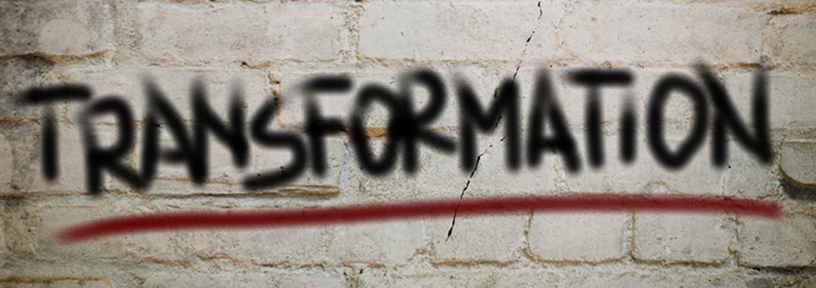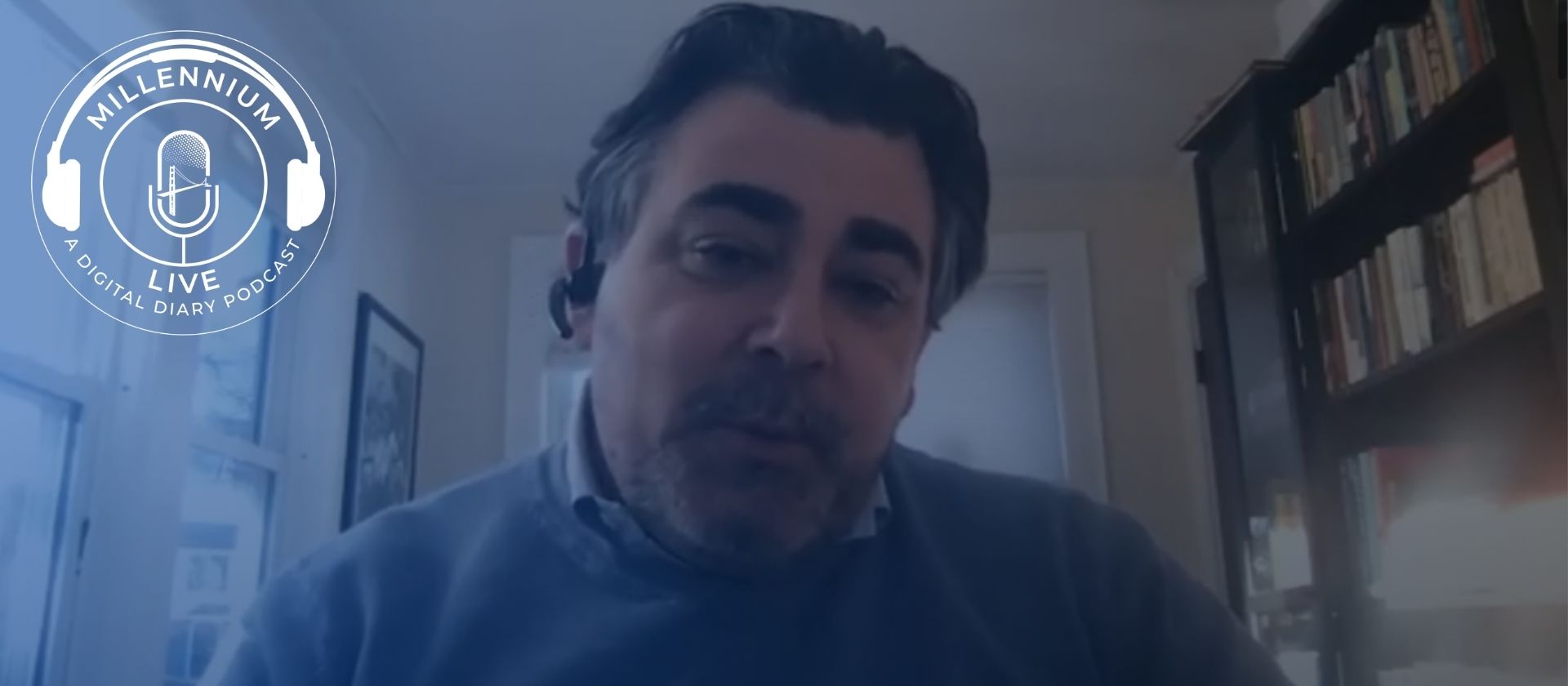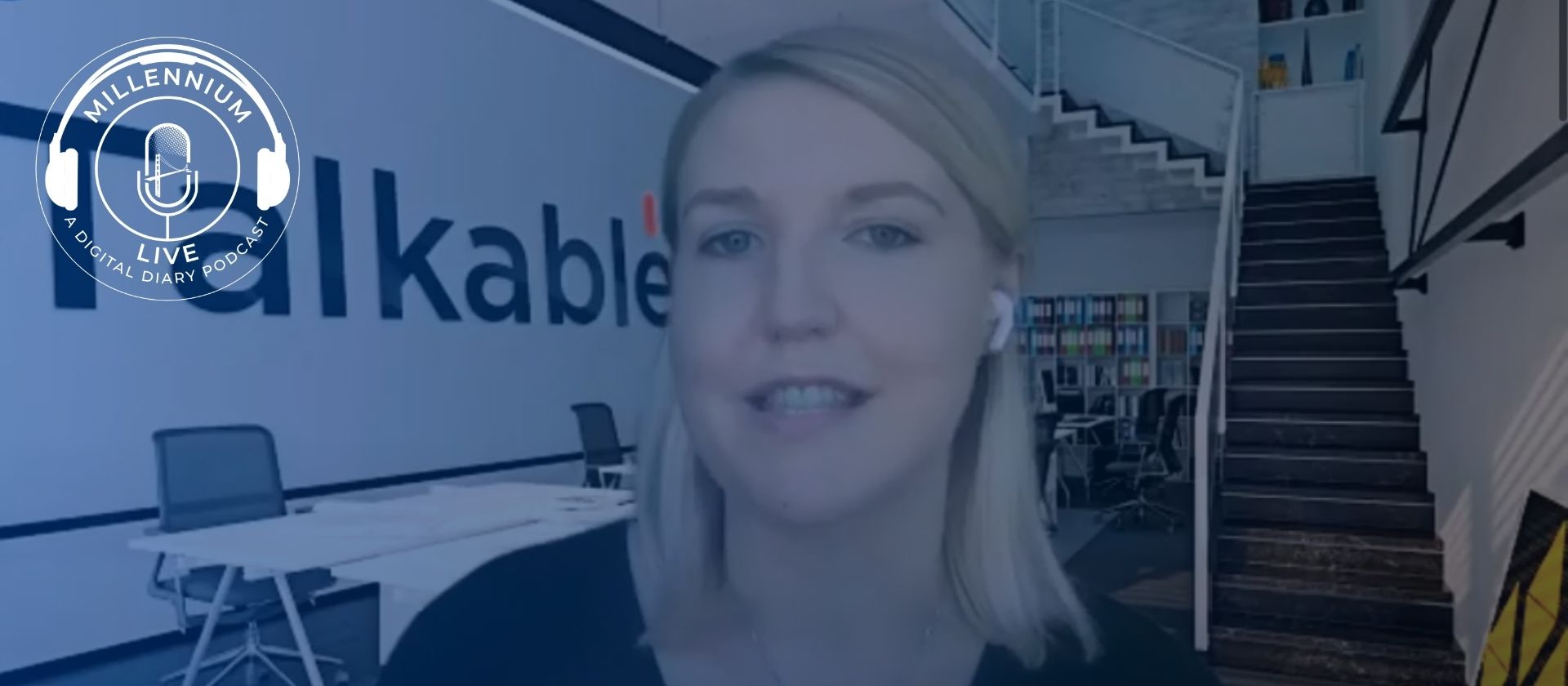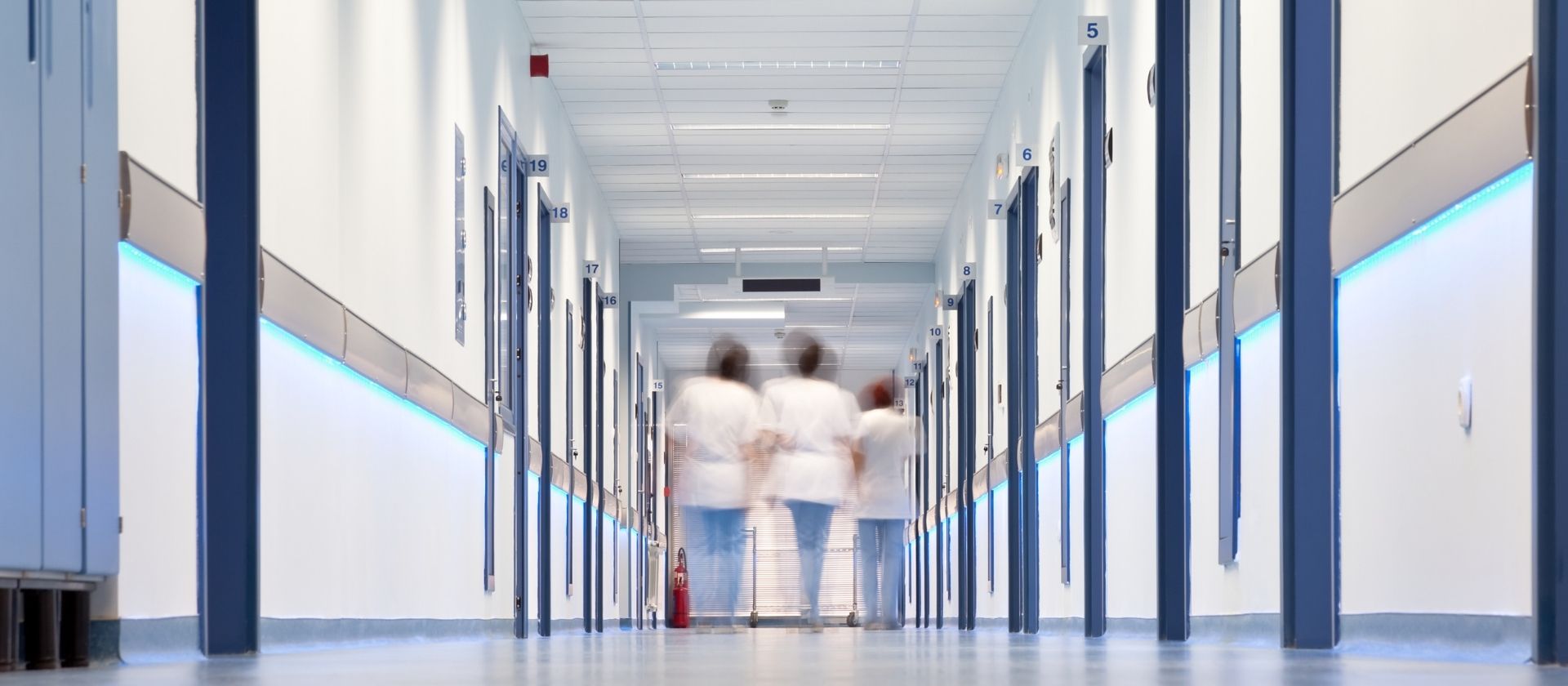Hospital leaders are acutely aware that one of their biggest unmet challenges is optimizing the use of high-intensity care settings to most effectively manage high-risk patients. AI-based risk models are becoming a key tool to support care teams in making real-time decisions about patient status and the ideal level of care. Hospital researchers have not ignored the challenge of identifying decompensating patients early. Numerous studies have shown that early identification of deteriorating patients in hospital units outside of critical care can improve mortality rates and clinical outcomes—and reduce costs. Check out this report from our partners at Wolters Kluwer to learn more about these studies and evidence that supports the strong need for AI-driven early warning systems.
Archives: Articles
Site articles.
Transforming Your Digital Transformation
As originally published by Nick Van Weerdenburg
Change is difficult, so most companies pull the bandage slowly, hoping to avoid the hard, painful part – especially with regard to digital transformation. But in the corporate world, cautious change inevitably leads to entropy. Progress gets made in one department at a time, at the expense of others. Leaders turn over, priorities shift, plans fall apart and the desired results never happen. The bandage never really comes off.
I see this happen a lot in companies that say they want to transform their digital customer experience – across all industries we work with. The board or the shareholders might not embrace a truly digital-first strategy or understand what the end-state transformation goal actually is. Instead, they end up digitizing the past, refreshening a longstanding brand with a new storefront in a doomed effort to maintain business-as-usual.
These companies start with a well-meaning internal innovation team. They preach agility, then spend months researching the problem and consulting internal stakeholders, all the while trying to stay close to their comfort zone of existing practices. They write reports, they create roadmaps, run design-thinking workshops and come up with a solution … and then throw it over the wall to IT and wash their hands of it. Nine months later, the team is busy executing the new plan, but, with no internal champion, it can’t innovate. Due to the chaos and complexity of the project, the company burns through its budget and the project becomes a sad statistic. In fact, 95% of corporate digital transformations fail outright or produce diluted results, according to one recent study.
Go here to read the full article
Implementing Automated Secrets Detection for Application Security
Dev & Ops teams from large organizations use thousands of secrets like API keys and other credentials in order to interconnect the building blocks of their applications. As a result, they now have access to more sensitive information than companies can keep track of. The risk is that these secrets are now spreading everywhere.
In this whitepaper from our partners at GitGuardian, we look at the implications of secret sprawl, and present solutions for Application Security to further secure the SDLC by implementing automated secrets detection in their DevOps pipeline.
Download the whitepaper here
#MillenniumLive on the Great Digital Switch with Qlik
The pandemic has brought about the “Great Digital Switch” and the role of data became paramount in businesses that needed to adapt and reinvent themselves quickly. #MillenniumLive is joined by Joe DosSantos, Chief Data Officer at Qlik, to discuss how digital transformation is all about data, understanding data, and data-driven decision making. Qlik uses an “Active Intelligence” theme, which emphasizes how in today’s world, everything happens at the speed of “now”, and that means you need to be more cognizant of the data as it changes moment by moment.
Watch the video interview below, or listen to the podcast episode on Spotify or Apple Podcasts.
Active Intelligence: The Next Era in Business Intelligence
Traditional BI’s passive approach can’t handle today’s data-driven demands. Introducing Active Intelligence. Real-time agility has become essential, and the faster an organization can respond to events as they evolve, the better it can compete. In the eBook, Active Intelligence – The Next Era of Business Intelligence: Optimizing Every Business Moment through Informed Action, you can read highlights including:
- What is Active Intelligence? And how can your company begin to incorporate it?
- The top 5 benefits of Active Intelligence
- Top business outcomes your organization can achieve
Active Intelligence: The Next Era in Business Intelligence
As originally published by our partners at Qlik
Traditional BI’s passive approach can’t handle today’s data-driven demands. Introducing Active Intelligence. Real-time agility has become essential, and the faster an organization can respond to events as they evolve, the better it can compete. In the eBook, Active Intelligence – The Next Era of Business Intelligence: Optimizing Every Business Moment through Informed Action, you can read highlights including:
- What is Active Intelligence? And how can your company begin to incorporate it?
- The top 5 benefits of Active Intelligence
- Top business outcomes your organization can achieve
Download this eBook to discover how this new approach overcomes the shortcomings of traditional BI by delivering continuous intelligence from real-time, up-to-date information designed to prompt immediate actions.
Download the eBook here
#MillenniumLive on Consumer Loyalty & Rewards with Talkable
This week #MillenniumLive is joined by CEO at Talkable, Summer Lindman. We discuss how Talkable enables commerce brands to acquire and retain high value consumers through loyalty and rewards programs, and what some of their most successful brands are doing to keep up with the change in buyer behaviors brought on by the pandemic. As an e-commerce leader, Lindman also shares her predictions on what’s to come in 2021.
Watch the video interview below, or listen to the podcast episode on Spotify or Apple.
Talkable’s Complete Guide on Referral Programs for Marketers & eCommerce Managers
What is referral marketing and how do you start your first campaign? A complete guide by Talkable — the leading referral software on the market. In this guide, Talkable breaks down:
- Why referral marketing is so effective
- Referral vs Affiliate programs
- WOM and referral programs
- How to start a referral program
- Measuring and improving your referral program
Go here for the full guide (it’s free!)
David Sable: “The Pandemic Has Not Killed Your Office…It Was on Life Support Long Before.”
As originally published by David Sable on Linkedin. Subscribe to the newsletter!
The notion of going “Back to Work” is a tone-deaf headline akin to “The New Normal.” Both and neither are accurate indicators of the State of Working or the Workplace, and failure is sure to follow those who think that either concept is true or a path to follow.
Going “Back to Work” is meaningless. Tragically, many people are out of work. Some remain furloughed as their companies try desperately to stay afloat another week, another month. Others, laid off, are in desperate search of work to do.
And, while many of us were safely socially distancing in our homes during lock down, frontline workers, not just the doctors and nurses who kept us alive, but all of those folks in the gig economy, working on a paltry hourly salary, kept things going for all of us. Where would we be if not for our doormen, the workers who made sure our packages were delivered, our food was produced, our toilet paper manufactured, our buses and trains operated and moving?
And finally, in the face of the notion of getting “Back to Work,” I imagine everyone who has WFH this past year, myself included, would say, “WTF what do you think we have been doing all these months?” Some of us have been juggling family and work time in very close proximity, others battling loneliness, all of us available for the Zoom, Team, Meets and whatever other means of communications the gods of collaboration have deemed important…a story for another time.
As for “The New Normal”? Nothing more than a sad, wishful look backwards. We are actually living in the dynamic, ever-changing world we have spent years stressing and babbling on about, only this time it’s life and death. There is no “New Normal”—it’s dangerous to look for one and fatal to plan for it.
Bottom line? There is no going back. There can only be going forward. But in the context of “Work,” my topic today, what does that mean?
- For office space
- For in-person collaboration
- For efficiency and cost
In summary, what does returning to work and the workplace mean beyond the rhetoric?
To learn as much as I could about the topic and its many intricacies, I went to the best graduate school I know. I called my friend Guy Vardi, Chief Innovation Officer of Silverstein Properties, partner and founder of DoJo, an AI based behavioral science platform that analyzes and designs efficient workplaces that make people more effective, and all around tech guru and creative thinker.
Among his many duties as Chief Innovation Officer is “change management.” And, clearly, in the world of “No New Normal,” and in an industry that builds, sells/leases and manages huge expanses of space, change is daunting and not obvious or embraced by all—unless Guy is in charge.
Therefore, and not surprisingly, Guy’s opening remarks to me were:
“Commercial landlords are no longer in the business of leasing office space. They are now in the business of work.”
Guy continued, “In the ‘Good Old Days,’ [the “Old Normal” for those of you who are nostalgic], commercial leasing operated on a simple equation: the total size/square footage of the space divided by the number of people, equaled efficiency.” Easy to measure in dollar returns and not complicated by any other factors.
In the dynamic environment we live in, though, the metrics are equally dynamic:
- Resilience – of a workforce that turns over quicker than any other workforce in history…that burns out quicker…that loses interest quicker
- Performance – what is the relationship between efficiency and productivity and between that and marketable output?
- Financial – in a world where quarterly earnings still rule, what does it all cost and what is the impact to shareholders?
DoJo breaks out the new metrics and their inter-relationships as follows:
- Collaboration and Individual Productivity
- Minimizing Change of Seating and Maximizing Health Safety
- Hours of Commute and Hours of Screaming Kids or Lonely Silence
All of which has taken on new and urgent meaning, as “Forward to Work” now means WFH at least one day per week:
Yet, when it comes to our relationships with office space and work environments, Guy cautions not to get caught in the COVID trap of blaming reluctance to return on the pandemic alone. Frankly, many of your employees have figured out how to safely socialize, eat at restaurants, shop and travel during this time period. No doubt, with the proper safety protocol, offices should be able to do the same.
The real issue began long before the pandemic and cuts much deeper. It is a nexus of cost cutting, poor planning, lack of research and inattention to culture.
In research published in the book, Peopleware, the top quartile of performers had an average of 78 sq. ft. per person vs 46 sq. ft. for the 4th quartile. Privacy, quiet and less interruption were the primary drivers of that phenomenon.
The Allen Curve measures the frequency of communications between people as the distance between them increases.
When people who work together and need to collaborate don’t sit next to each other, and instead have to sit in new space every day, they won’t bother to find or talk to the person who really should be sitting near them. And, as we saw from the chart above, that small impersonal space, swapped around every day, doesn’t help.
A number of years ago, a large tech company conducted an experiment where they temporarily removed the central coffee machine, water cooler, etc. Their finding? People stopped meeting serendipitously, and cross pollination of ideas and groups was seriously affected.
A similar study showed an increase in employees’ personal productivity, in this case, lines of code written, but a decrease in the number of actual new products coming to market, as again, the critical and creative serendipity factor had been eliminated.
Both studies highlight the tension between the value to a company and its employees, of the true balance that needs to be weighed between WFH and WIO (Work in Office) as can be seen in the chart below:
There are benefits to both. I might feel more creative and innovative at home, but without the collaboration and mentoring, will I be able to apply my creativity as powerfully as I’d like?
Success in the future will depend upon acknowledging that we need to fix the workplace, beyond making it COVID/pandemic safe, and that we shouldn’t fall for the belief that WFH will be all there is.
Perhaps most surprising in all of this data, is looking at who feels most productive at home:
Amazingly, it’s not Gen Z. There’s lots more to unpack there, but it seems safe to say that they need and crave the onboarding and mentoring of face-to-face work environment and the experience of serendipitous meeting and creating.
Perhaps there is a greater urgency to fix your work culture than you may even have yet realized.
Guy’s final share with me says it all…Listen:
Wouldn’t it be ironic if the next “Disruption” came from a bunch of folks in a garage somewhere? Blast from the past…
What do you think?
Better Predictions, Better Results: UCH Early Predictor of HCAHPS
Improving patient experience can be a challenge given the number of doctors, nurses, and support staff any given patient interacts with. Furthermore, the long lag time, low response rates and lack of specificity in HCAHPS (Hospital Consumer Assessment of Healthcare Providers and Systems) surveys presents an even greater challenge to assessing and improving patient experience. Healthcare organizations need faster real-time, individualized data to improve patient and staff experience and lead to higher HCAHPS scores. The case study below shows how University of Maryland Upper Chesapeake Health (UCH) utilized Wambi to improve employee engagement and patient experience, and found that the Wambi platform is an early predictor of the HCAHPS.
Go here to download the case study from Wambi
The Importance of Investing in Data and Analytics Pipelines
As originally published by our partners at Qlik
New IDC study reveals the importance of optimizing data-to-insights pipelines in order to improve business decision making and outcomes.
In a recent IDC survey, 87% of CXOs said that becoming a more intelligent enterprise is their priority for the next five years.* In today’s economic environment, organizations are starting to think of data as the “new water” – not just a valuable asset but an essential ingredient for survival.
To measure the correlation between data use and business success, IDC conducted a global survey of 1200 organizations. The findings quantify the connection between better data use and higher business value. In the Infobrief, Data as the New Water: The Importance of Investing in Data and Analytics Pipelines, you can read the highlights, including:
- The top three metrics tied to the success of investments in data management and analytics
- The importance of establishing a data-to-insights pipeline where every component is connected
- The top five recommendations IDC has for optimizing data pipelines
Go here for more information
Mill-All Team Spotlight: Tami Corsi’s Yale Certification
Education, Transformation & Leadership are the three pillars of The Millennium Alliance, and we’re so honored to have a team of staff that take this with them in their day-to-day lives. Tami Corsi, our Senior Healthcare Alliance Executive, has been an innovator and leader with us for over 3 years. Always on the quest to sharpen her skills, Corsi completed an executive education healthcare management course with the Yale School of Management, and received her certification with a 94% average. We asked her a few questions about the experience, her takeaways, and advice on pursuing executive education while balancing a busy life.
Q: You recently completed a course with Yale’s School of Management for Healthcare. What inspired you to pursue this course, particularly with regards to healthcare?
TC: It probably makes sense to start at the beginning! When I started at The Millennium Alliance, healthcare was nowhere on the radar as far as interests – to the point where I wasn’t even sure what health insurance I was under. Millennium presented the opportunity to branch out into an industry with unlimited growth and potential and that is something I am so incredibly grateful for. The first event I attended was the Digital Healthcare Transformation Assembly at The Four Seasons Hotel Denver, CO. My job was to sit in the workshop room and take notes and pick out quotes from each session to post on social media. I learned more in two days from the executives discussing the future of healthcare and that pinpointed moment is where I realized there was a spark and a passion for the industry. Moving forward, reading articles and talking to delegates wasn’t enough to satisfy my curiosity. I started researching going back to school and one of the delegates I worked with, Chaka Jordan, suggested looking into certificate programs to test the waters. The Yale SOM online certificate program was a perfect fit given the time commitment, cost, and benefits. I would highly recommend the courses to anyone interested.
Q: Can you share with us a bit about the course, and what you learned? Did you gain insights on what might be next in digital health?
TC: The course was 8 weeks of content, 9 including online orientation. Each module was released on Wednesday morning and each student had the entire week to complete a series of videos, exercises, discussion boards, and finally a section test. The time commitment varied depending on the background of each student. For me, it took a little longer because all of the material was brand new, plus I’ve never worked inside a hospital before. Most students were participating in the course to further professional development so the content was more straightforward. One of the things I enjoyed about it was there were students from all over the world participating. I learned how other countries hospital systems work, health insurance is structured, and what they think of the current system in the United States. The biggest takeaway was that there is no one right answer. We are on the cusp of a technology boom in healthcare – with many solutions stemming from the pandemic – and as the famous saying goes, “Never let a good crisis go to waste” – Winston Churchill.
Q: What value did you gain from this experience that you can bring to The Millennium Alliance?
TC: Taking a course like the Yale SOM Healthcare Management program really helped with communicating with attendees on their level. It was rewarding to post in a discussion group of C-Level executives and have even one person validate with a ‘good point’. The content was also well aligned with the majority of our healthcare event agendas. It’s always a pleasure working with the product and marketing teams on agenda and content creation that is industry specific.
Q: After completing the course at the top of your “virtual class”, do you foresee continued education playing a large role in your career moving forward?
TC: Absolutely. It would be silly to work for a company who’s whole model is around executive education and not continue my own! I’ve considered going back to school for another bachelors but that’s a huge step so in the meantime, the short certificate courses are a fantastic option. There are a couple more courses coming up in 2021 specifically around digital healthcare innovation and artificial intelligence applications in healthcare that are on my radar. Working with such accomplished executives who focus on strategy and growth has also been a massive influence on my career trajectory. I’m blessed to have the opportunity and support of coworkers and leadership who have the same drive to always improve and educate.
Q: What advice would you give to someone that may be interested in pursuing ongoing education? All tips, tricks, and advice on time management are welcome!
TC: Do your research! Not every program will be the right fit for everyone and there are so many options out there. It’s 100% ok to consider a number of programs and weigh out the pros and cons specific to your situation. Some programs are crazy expensive, some allocate credits while others don’t, some are an entire semester and require a huge time commitment while others are a couple weeks. Ask as many questions as you need to and work with the programs counselors before signing up to gauge your interest. Once you have locked down a program, make sure to set aside time where you can focus 100% on your course. It’s very easy to put off doing the reading or discussion board till the end of the week and procrastinate. However, tackling the longest or most difficult portions first will make the content much more enjoyable when you can sit back and enjoy the discussion and not have to scramble at the last minute. My last piece of advice would be to network within the course group. The other students are most likely there for the same reason and networking can open up channels for the rest of your career. Lastly, have fun with it!















